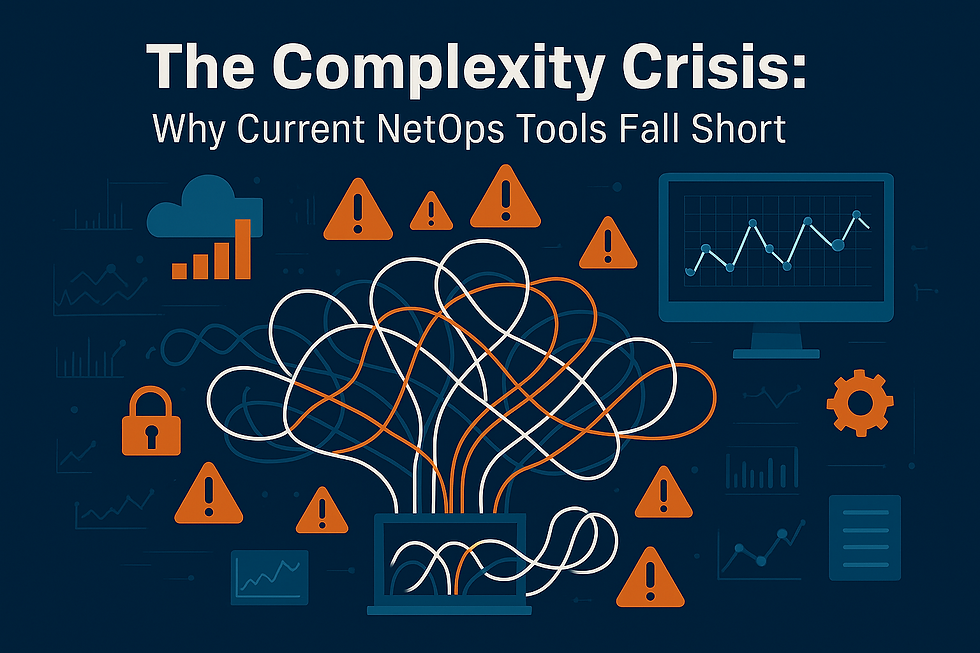The Complexity Crisis: Why Current NetOps Tools Fall Short
- webmaster5292
- May 6
- 2 min read
The Scale Has Outgrown the Tools Networks aren’t what they used to be.
According to Enterprise Management Associates, over 65% of IT teams are now juggling hybrid or multi-cloud networks, and nearly 70% say their environments have gotten significantly more complex in just the last two years. With so many moving parts — from cloud workloads to remote access to edge devices — the speed and sprawl of today’s networks are pushing traditional monitoring tools to their limits. It’s no wonder teams are rethinking how they manage, observe, and secure it all.
Data Everywhere, Insight Nowhere Network performance monitoring alone isn’t enough anymore. Logs, metrics, and traces pour in from dozens of systems, but often remain disconnected. Traditional tools flag symptoms but rarely explain causes. In one recent case, a financial services company spent 12 hours manually troubleshooting a latency issue across multiple dashboards — something an AIOps platform could have resolved in minutes through intelligent correlation and automated root cause analysis.
The Limits of Human ProcessingToday’s networks generate millions of signals per second — across endpoints, services, clouds, and edges. Human troubleshooting alone can’t keep pace. AI-driven network automation and AIOps technologies are now essential to convert noisy data into actionable insights. To stay ahead, teams need tools that observe holistically, reason intelligently, and react instantly — transforming how modern network operations are run.
Feeling the limits of your current NetOps tools?
Observeasy delivers no-code automation and AI-powered insights built for today’s networks.
Free your engineers from repetitive tasks, accelerate root cause analysis, and gain true observability — without writing a single script.
Book a demo and see how fast your team can move when your tools are as modern as your network.






Comments